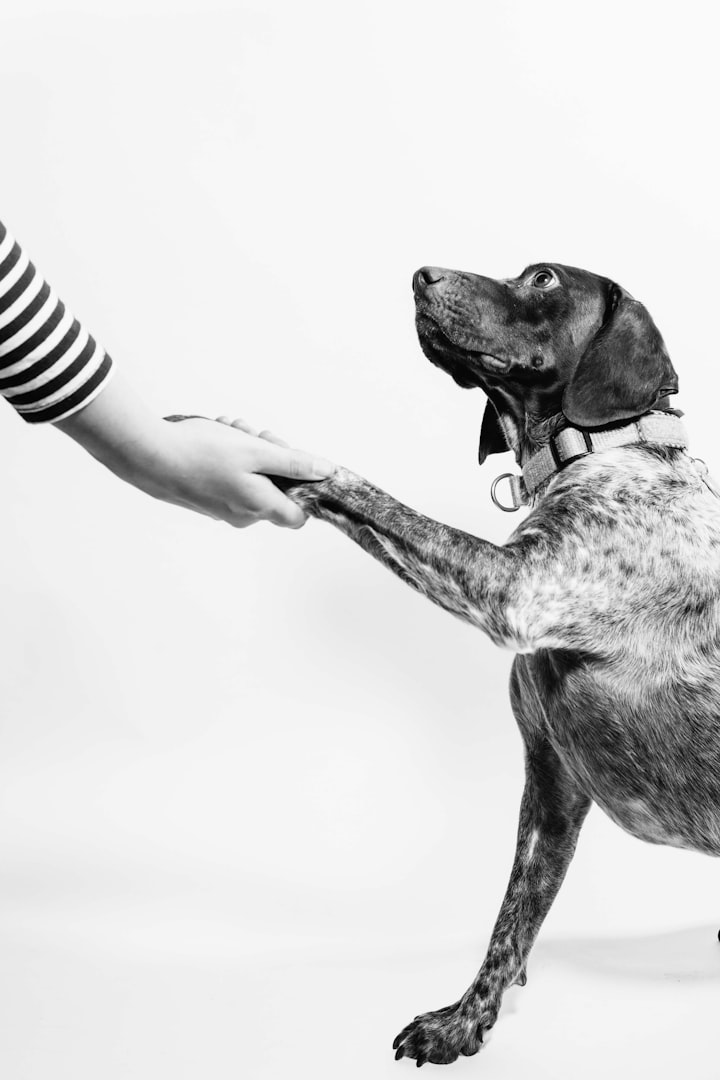The 5 Best Tips for Dog Training
Read this article to learn more

The 5 Best Tips for Dog Training
Dog training is an important part of pet ownership that can be both rewarding and challenging. With the right tips and techniques, however, anyone can become a successful dog trainer. In this blog post, we will cover the 5 best tips for dog training. From teaching basic commands to tackling more complex behavior problems, these tips will help you set your pup up for success and make the process of dog training enjoyable for both you and your pup. Read on to learn more!
1) Start with the basics
No matter if you have a puppy or an adult dog, it is important to start with the basics when it comes to training. Teaching your pup simple commands such as “sit” and “stay” will help establish a routine that they can understand and respond to. It also helps them to become more obedient and builds trust between you and your pup. It can be helpful to start teaching your puppy some of these basic commands as soon as they come home so they know how to behave right away.
2) Get your dog used to being handled
One of the most important things you can do to ensure a successful dog training experience is to get your puppy used to being handled. This helps build a strong bond between you and your pup and also helps them learn to trust you. Start by gently petting your puppy, massaging their body, and talking in a gentle, soothing voice. Gradually work up to brushing and combing them, looking inside their ears, and trimming their nails. Remember to always reward your pup with treats and positive reinforcement during these activities.
3) Use positive reinforcement
Positive reinforcement is one of the best ways to train your dog. It’s based on rewarding desirable behavior with treats or praise. For example, if your dog sits, give him a treat and say “Good boy!” With positive reinforcement training, you’re encouraging your dog to repeat the desired behavior in order to get the reward.
It’s important to remember that positive reinforcement should always be used in conjunction with other training methods. Otherwise, it can quickly become a crutch that limits your dog’s ability to learn new skills.
When using positive reinforcement, it’s important to give rewards at the right time. The reward needs to happen immediately after your dog performs the desired behavior in order for him to associate the reward with that behavior. If you wait too long to give the reward, he won’t be able to make the connection between the two.
You also need to vary the type of reward you give. Some dogs may prefer treats, while others may prefer verbal praise or a pat on the head. Experiment with different types of rewards until you find something your dog responds to positively.
By using positive reinforcement training, you can effectively teach your dog new behaviors and reinforce those he already knows. This type of training is very effective and can help you create a well-behaved pup.
4) Be consistent
Finally, be consistent with your rewards. If you reward only some behaviors and not others, your dog will quickly become confused and lose interest in the training process. Make sure to consistently reward behaviors that you want your dog to repeat. Consistency is key when it comes to dog training. Dogs learn best when they know what is expected of them. You must be consistent in your commands, rewards, and punishments. This means not allowing your pup to get away with certain behaviors one day and punishing them for the same behavior the next. Also, try to stick with the same training techniques and routines each day. Your pup will soon understand what you expect from them and that consistency will help to reinforce the good behaviors you are trying to teach them.
Set reasonable expectations:
It's important to remember that you can't expect your pup to learn a new behavior overnight. Training takes time and patience, and it's important to be realistic in your expectations. Set reasonable goals and use positive reinforcement to reward your pup when they meet these goals.
Above all else, be patient with your pup and yourself. Training takes time and consistency, so don't give up if your pup doesn't seem to be getting it right away. Reward your pup for even small steps forward, and celebrate those victories together!
5) Seek professional help if needed
Training your dog can be a rewarding experience, but sometimes it can be difficult to accomplish without help. If you are having trouble training your pup, don’t hesitate to reach out for professional help. Professional trainers have the skills and experience to help you find success with your dog training goals.
There are several ways to get professional help for dog training. First, you can find a certified dog trainer who has been trained in a variety of techniques and understands the needs of your pet. You can also search for obedience classes, puppy classes, and even private lessons to help your pup learn the right behavior. When seeking out a professional trainer, make sure they have experience working with the breed of dog you have and the specific behaviors you’d like to work on.
You can also search for animal behaviorists if you’re dealing with more serious behavioral issues. Animal behaviorists specialize in understanding why an animal is exhibiting certain behaviors and how to address them. They’ll be able to help you identify triggers that cause problem behavior and suggest strategies for dealing with them.
Finally, if you’re not sure where to start or want some extra guidance, you can always reach out to your veterinarian. Your vet can provide advice on how to train your pup and may even be able to recommend a certified trainer who can help you reach your goals.
Ultimately, seeking professional help is the best way to ensure success in training your dog. With the right approach and guidance, you can effectively train your pup and create a happier home environment.
If you want to learn more about Brain Training For Dogs, click here.
About the Creator
Lauren Maddox
I am a Realtor with a passion for interior design, health and fitness, fashion, luxury looks for less, and of course, I can't fail to mention my love of pets! I hope you find value in the the topics that I hold near and dear to my heart.






Comments
There are no comments for this story
Be the first to respond and start the conversation.